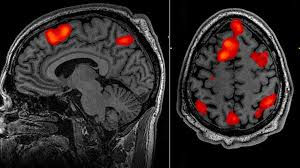Why Our Brains Crave Fear—and How It Drives Success
- Jessica Serre

- Jul 28
- 3 min read

Fear is often seen as a negative emotion—something to be avoided, suppressed, or overcome. But recent scholarly research reveals a more nuanced truth: our brains are wired to seek out fear, and when harnessed correctly, it can be a powerful catalyst for growth, innovation, and achievement.
The Neuroscience of Fear: A Built-In Survival Mechanism
Fear originates in the amygdala, the brain’s emotional processing center. When we encounter a threat—real or perceived—the amygdala triggers a cascade of physiological responses: increased heart rate, heightened alertness, and a surge of norepinephrine, the stress neurotransmitter that sharpens focus and memory2.
Researchers at Tulane University found that norepinephrine stimulates inhibitory neurons in the amygdala, creating a bursting pattern of electrical activity that shifts the brain from a resting state to an aroused state. This transition enhances fear memory formation, ensuring we remember threatening experiences vividly.
Far from being a flaw, this mechanism is adaptive. It helps us avoid danger, make quick decisions, and learn from past mistakes.
Why We Seek Fear: The Thrill of Controlled Risk
So why do people voluntarily seek fear—through horror films, extreme sports, or high-stakes challenges?
Dopamine release: Studies show that fear, when experienced in a safe context, can trigger dopamine—the brain’s reward chemical. This creates a pleasurable rush, similar to excitement or anticipation.
Cognitive stimulation: Fear activates multiple brain regions, including the hippocampus and prefrontal cortex, enhancing memory, attention, and decision-making.
Emotional resilience: Facing fear in controlled environments helps build tolerance to stress, improving emotional regulation and confidence.
In essence, fear becomes a motivational tool—a way to push boundaries and test limits.
Fear as a Driver of Success
Fear isn’t just a survival tool—it’s a performance enhancer. Research from Harvard Business School highlights the concept of productive fear: fear that’s focused on real threats and used to fuel action, innovation, and problem-solving.
Examples include:
Entrepreneurs who fear failure but use it to refine their ideas and strategies.
Students who channel fear of poor performance into disciplined study habits.
Leaders who confront fear of uncertainty to make bold decisions.
In contrast to problematic fear (which paralyzes), productive fear stimulates creativity, resilience, and adaptability.
Fear & Memory: Why It Sticks—and Why That’s Useful
A study published in Nature Communications found that fear memories are “seared” into the brain due to norepinephrine’s effect on amygdala neurons. This intense encoding helps us:
Avoid repeating dangerous mistakes
Learn faster under pressure
Develop intuition and foresight in high-risk environments
This is especially relevant in fields like medicine, aviation, and emergency response—where fear-based learning can save lives.
🌱 Fear, Growth & the Human Experience
From an evolutionary standpoint, fear has always been a teacher. It guided our ancestors away from predators, unsafe terrain, and social rejection. Today, it continues to shape our behavior—but with the potential to elevate rather than inhibit.
When we learn to embrace fear, we unlock:
Greater self-awareness
Improved emotional intelligence
Higher achievement through calculated risk-taking
As psychologist Shmuel Lissek notes, fear can be generalized too broadly in anxiety disorders—but when properly calibrated, it becomes a strategic asset.
Conclusion: Fear Isn’t the Enemy—It’s the Edge
Our brains crave fear not because we’re broken, but because we’re built to grow through challenge. Whether it’s the thrill of a new venture or the tension before a big performance, fear sharpens our senses, deepens our learning, and propels us toward success.
So the next time fear knocks—don’t slam the door. Invite it in, listen closely, and let it guide you to your next breakthrough.
References:
Microsoft Copilot





Commentaires